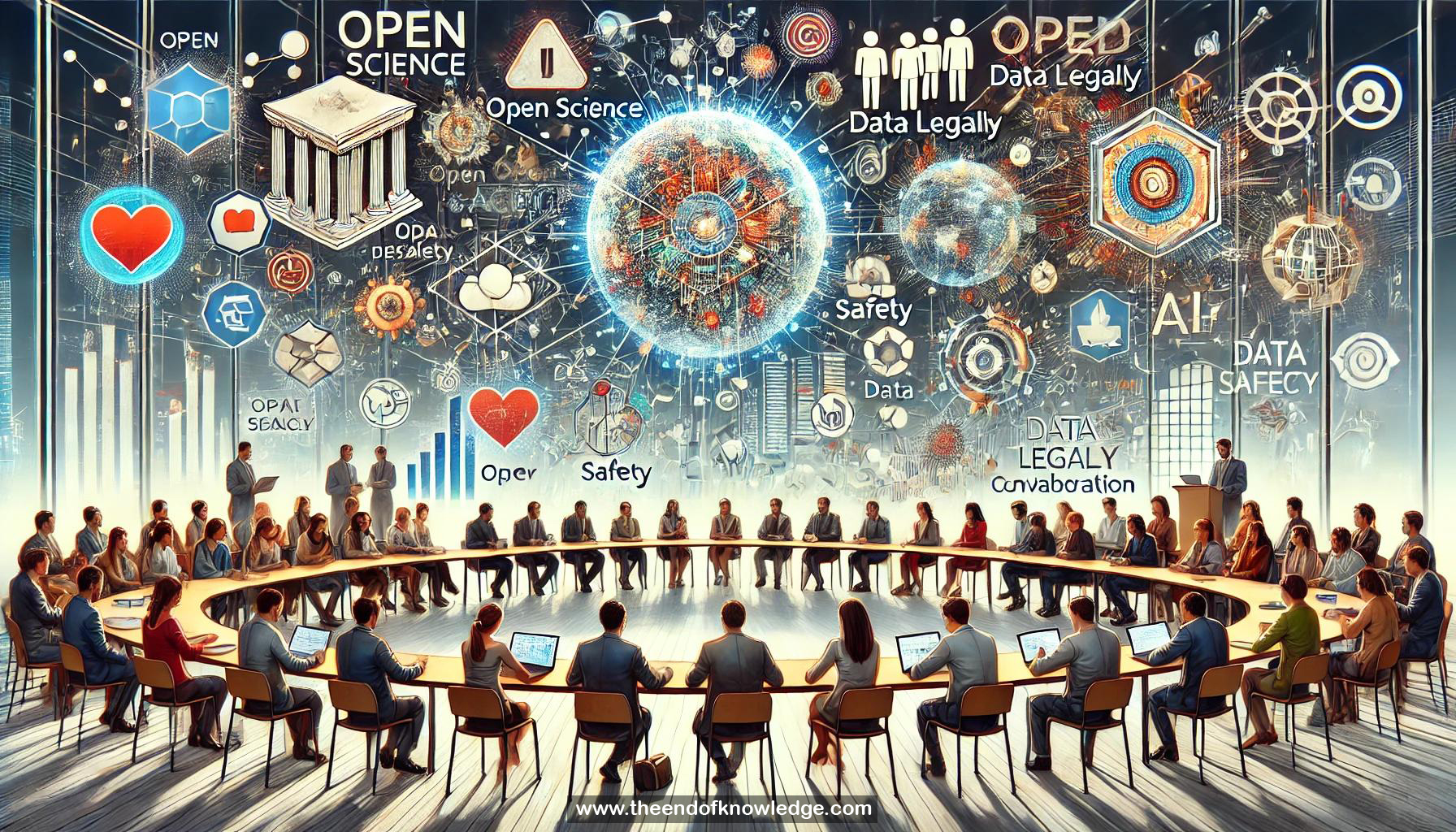Concept Graph & Resume using Claude 3.5 Sonnet | Chat GPT4o | Llama 3:
graph LR
classDef trends fill:#f9d4d4, font-weight:bold, font-size:14px
classDef concerns fill:#d4f9d4, font-weight:bold, font-size:14px
classDef stakeholders fill:#d4d4f9, font-weight:bold, font-size:14px
classDef solutions fill:#f9f9d4, font-weight:bold, font-size:14px
classDef future fill:#f9d4f9, font-weight:bold, font-size:14px
Main[Unapologetically Open Science] --> T[Historical Trends]
Main --> C[Current Concerns]
Main --> S[Stakeholder Dynamics]
Main --> P[Proposed Solutions]
Main --> F[Future Directions]
T --> T1[ML openness trend until
twenty-twenty 1]
T --> T2[Sharing creates global value 2]
T --> T3[Open source speeds development 3]
T --> T4[Companies share ecosystem growth 4]
T --> T5[Best research openly shared 6]
T --> T6[Development becomes closed now 7]
C --> C1[Time patents harm sharing 5]
C --> C2[Computing needs grow extensively 8]
C --> C3[Society scrutinizes AI closely 9]
C --> C4[Legal data concerns rise 10]
C --> C5[Safety worries increase 11]
C --> C6[Progress needs deployment testing 16]
S --> S1[Different groups shape future 12]
S --> S2[Startups target specific tasks 13]
S --> S3[Users demand open access 14]
S --> S4[Groups have competing goals 15]
S --> S5[Nations keep advantages private 18]
P --> P1[OpenSync gathers human feedback 22]
P --> P2[Feedback storage costs rise 23]
P --> P3[License groups must form 24]
P --> P4[Capitalism helps maintain open 26]
P --> P5[Academia industry collaborate 28]
F --> F1[Closed AI affects growth 17]
F --> F2[Trust affects regulation success 19]
F --> F3[Full automation remains distant 20]
F --> F4[Careful product research needed 21]
F --> F5[Generative AI needs evaluation 25]
F5 --> F6[Greed scales open science 27]
F4 --> F7[Research impacts society deeply 29]
F3 --> F8[Efficiency versus size matters 30]
class Main,T,T1,T2,T3,T4,T5,T6 trends
class C,C1,C2,C3,C4,C5,C6 concerns
class S,S1,S2,S3,S4,S5 stakeholders
class P,P1,P2,P3,P4,P5 solutions
class F,F1,F2,F3,F4,F5,F6,F7,F8 future
Resume:
1.- Machine learning field was trending toward openness until 2020
2.- Reasons for being open: giving value, global progress, ecosystem growth
3.- Open source benefits: faster ecosystem development with fewer resources
4.- Companies open-source to commoditize complements (PyTorch, LLaMA examples)
5.- Reasons against openness: time advantage, patents, potential harmful effects
6.- 2010-2020: Best research increasingly open (AlexNet to BERT)
7.- Post-2020 regression toward closed AI development
8.- Growing compute and engineering resource requirements
9.- Increased societal scrutiny of AI models and data
10.- Data legality concerns becoming more important
11.- Safety and social impact worries increasing
12.- Different stakeholders: academics, industry researchers, AGI startups
13.- Vertical AI startups focusing on specific tasks
14.- Reddit researchers and regular AI users wanting open access
15.- Multiple competing objectives among different stakeholder groups
16.- Difficulty measuring AI progress without deployment
17.- Debate over closed AI and safe proliferation
18.- Question of national advantage in keeping AI closed
19.- Regulation effectiveness depends on trust in institutions
20.- Speaker's stance: full AI automation still far away
21.- Need for slow, careful product integration and research
22.- OpenSync proposal: centralizing human feedback collection
23.- Challenge of feedback storage and distribution costs
24.- Need for data license consortiums
25.- Evaluation challenges in generative AI
26.- Importance of embracing capitalism while maintaining openness
27.- Greed as potential scaling factor for open science
28.- Academia-industry collaboration benefits
29.- Need for understanding societal impact of research
30.- Future research areas: model efficiency, intelligence vs size
Knowledge Vault built byDavid Vivancos 2024
 >
>